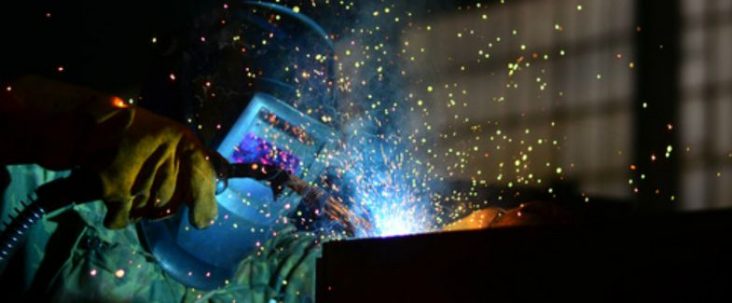Arkansas manufacturing sector faces dearth of skilled workers with tight labor pool, low unemployment
by February 2, 2019 12:48 pm 1,211 views

Futuristic fears that robots and artificial intelligence advances will replace workers in the manufacturing sector are not exactly panning out as factory employers in Arkansas and the rest of the nation continue to post “help wanted” signs to attract highly skilled blue-collar workers.
Heading into 2019 after several years of dynamic growth, the consensus among economic forecasters is that tight labor conditions in the U.S. and globally will curtail further job additions over the next 12 months.
In fact, two recent highly-watched reports by Deloitte Consulting and the Conference Board highlight the challenge the nation’s manufacturing sector is facing with the widening gap between the jobs that need to be filled and the talent pool capable of filling open positions.
According to the Deloitte study, which was conducted in conjunction with the Manufacturing Institute, the U.S. economy has seen an outsized contribution from the manufacturing sector that has consistently contributed over 10% of the national gross domestic product (GDP) and represented more than 8% of all U.S. employees. In addition, the report noted there were 508,000 open jobs in U.S. manufacturing.
“It’s no surprise then that most manufacturers express strong optimism for the economy and jobs generation in the months to come,” said the authors of the report, which includes National Association of Manufacturers economist Chad Moutray.
Greg Kaza, a Little Rock economist who has closely tracked the state’s manufacturing employment data going back to when former President Bill Clinton was Arkansas governor, said the current expansion following the Great Recession in 2007-2008 is significantly stronger than other recent post-recession upturns that occurred between 1982-1990, 1991-2001 and 2001-2007.
“That is one little piece of information that I don’t think has been cited here in Arkansas at all, but if you compared the job creation in manufacturing in this expansion nationwide going to June 2009 to today and you compared it to the last two expansions before that, I believe the percentage growth rate is significantly higher,” said Kaza, director of the Arkansas Policy Foundation.
UNFILLED JOBS
Despite Kaza’s positive job growth assessment through 2018, the recent economic forecasts for 2019 and beyond predict that the same uptick in new factory jobs also presents the industry with its most pressing challenges. For example, the Deloitte report estimates 2.4 million positions unfilled between 2018 and 2028 with a potential economic impact of a whopping $2.5 trillion.
“While the job gains are positive indications that the industry continues to recover from the Great Recession and reflect strong production levels, it also means that finding talent with the right skills to fill the open jobs could reach crisis proportions,” states the 24-page report.
Similarly, the recently published Conference Board report entitled, “Blue Collar Worker Shortages,” points out that while GDP growth is expected to continue through 2019, the tightening labor pool will increasingly become a problem for industries that employ a large share of blue-collar workers.
The main reason for the overall tightening is that the working-age population is barely growing at all, thanks to the aging of the large baby boom generation. The implications to the economy are rising recruiting difficulties, declining retention rates and worker quality, and the faster wage growth spilling over to higher producer prices and corporate profits.
“To put it bluntly, there are simply not enough people in the labor force willing to work in blue-collar jobs. The implications for the economy and many businesses are clear: recruiting difficulties are rising, retention rates and worker quality are declining, and the faster wage growth caused by labor shortages is spilling over to higher producer prices and threatening corporate profits,” said Conference Board economist Gad Levanon. “In such an environment, automating further and raising labor force participation are essential for businesses and the economy to meet demand.”
Closer to home, University of Arkansas economist Mervin Jebaraj and highly-cited Creighton University forecaster Ernie Goss are already seeing anecdotal evidence that the tightening labor pool is impacting manufacturing growth in Arkansas where unemployment fell to a record low of 3.5% in the summer.
Jebaraj said that low unemployment and a tight labor market has led to people dropping out of the labor force. Goss said that the trends will lead to other industry sectors outpacing manufacturing in 2019.
Both Jebaraj and Goss agreed that uncertainty on current tariffs and trade restrictions in Arkansas will make further growth in the manufacturing sector difficult due to higher costs to buy foreign products and raw materials.
“So, there are a lot of headwinds on the horizon,” said Jebaraj.
University of Arkansas at Little Rock economist Michael Pakko believes there is still some room for growth in the state’s manufacturing sector in 2019. He notes that over the past two years, manufacturing has been doing relatively well in Arkansas with annual output at 2.8%, more than twice the pace of state GDP.
“Employment in manufacturing has been growing at 3% — three times the pace of total employment. Both output and employment remain below their levels of a decade ago, but recent trends are encouraging,” said Pakko. The UALR economist added that although low unemployment levels in Arkansas and nationally suggest extra employment gains might be limited, further demands for labor shortages could put upward pressure on blue-collar wages.
“One mitigating factor for labor shortages and wage pressures, however, is the decline in labor force participation over the past few years,” said Pakko. “Workers who have dropped out of the labor force in recent years might be coaxed back by expanding opportunities, particularly with rising wages.”
__________________
Editor’s note: This article first appeared in Talk Business & Politics State of the State 2019 magazine, which you can access here.
